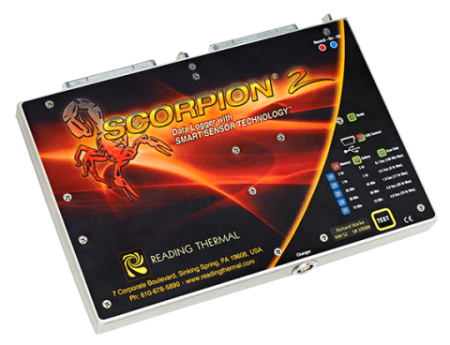Few things are more satisfying than pulling a perfectly browned loaf of bread out of the oven. That golden crust isn’t just about looks – it’s a sign that the baking process was executed correctly. Thermal profiling for bread products from Reading Thermal can ensure every loaf comes out looking – and tasting – its very best.
Achieving consistent browning across every loaf isn’t always easy. Uneven heat distribution, incorrect baking times and moisture imbalances can all lead to loaves that are pale in some areas and too dark in others. This is where thermal profiling makes all the difference. By analyzing how heat moves through the oven and interacts with the dough, bakers can ensure even browning, batch after batch.
Why Even Browning Matters
A well-browned loaf isn’t just visually appealing – it plays a crucial role in flavor and texture. If browning is uneven, it means some parts of the loaf have developed the right flavors while others haven’t, leading to an inconsistent eating experience.
Uneven browning also affects moisture retention. A properly browned crust helps seal in moisture, keeping the bread soft inside while giving it a crisp, flavorful outer layer. If one side is underbaked, that part may become too soft or even soggy. If another side is too dark, it might turn dry and hard, making the texture unpleasant.
How Thermal Profiling Ensures Even Heat Distribution
One of the biggest culprits behind uneven browning is inconsistent heat distribution in the oven. Some areas might be hotter than others, causing certain parts of the loaf to brown faster while others lag behind. Thermal profiling systems, such as the SCORPION® 2 Profiling System from Reading Thermal, help detect these temperature variations, allowing bakers to adjust oven settings or reposition loaves for a more uniform bake.
By mapping out temperature zones inside the oven, bakers can identify hot and cold spots. If one side of the oven runs hotter, simple adjustments like rotating loaves midway through baking or modifying airflow settings can correct the issue. For commercial bakeries, investing in more precise heat control systems based on thermal profiling data can dramatically improve consistency across large batches.
The Role of Moisture in Browning
Humidity plays a huge role in how well a loaf browns. Too much moisture in the oven can slow down the Maillard reaction, resulting in loaves that stay pale even after a full bake. On the other hand, too little moisture can cause the crust to set too quickly, preventing the bread from fully expanding and leading to a thick, uneven crust.
Thermal profiling helps track humidity levels throughout the baking cycle. By maintaining the right balance, bakers can encourage even browning while preventing the crust from becoming too hard or too soft. Steam injection systems, water pans or adjusting venting settings can all be used to fine-tune moisture control based on thermal data.
Even browning is essential for flavor, texture and overall quality. Thermal profiling for bread products gives bakers the tools to control heat distribution, moisture levels, and baking times with precision. Understanding how heat interacts with dough leads to better, more consistent results. If you would like more information on our thermal profiling systems, a Reading Thermal expert is waiting to hear from you. Contact us online or call 610-678-5890 to get in touch.

